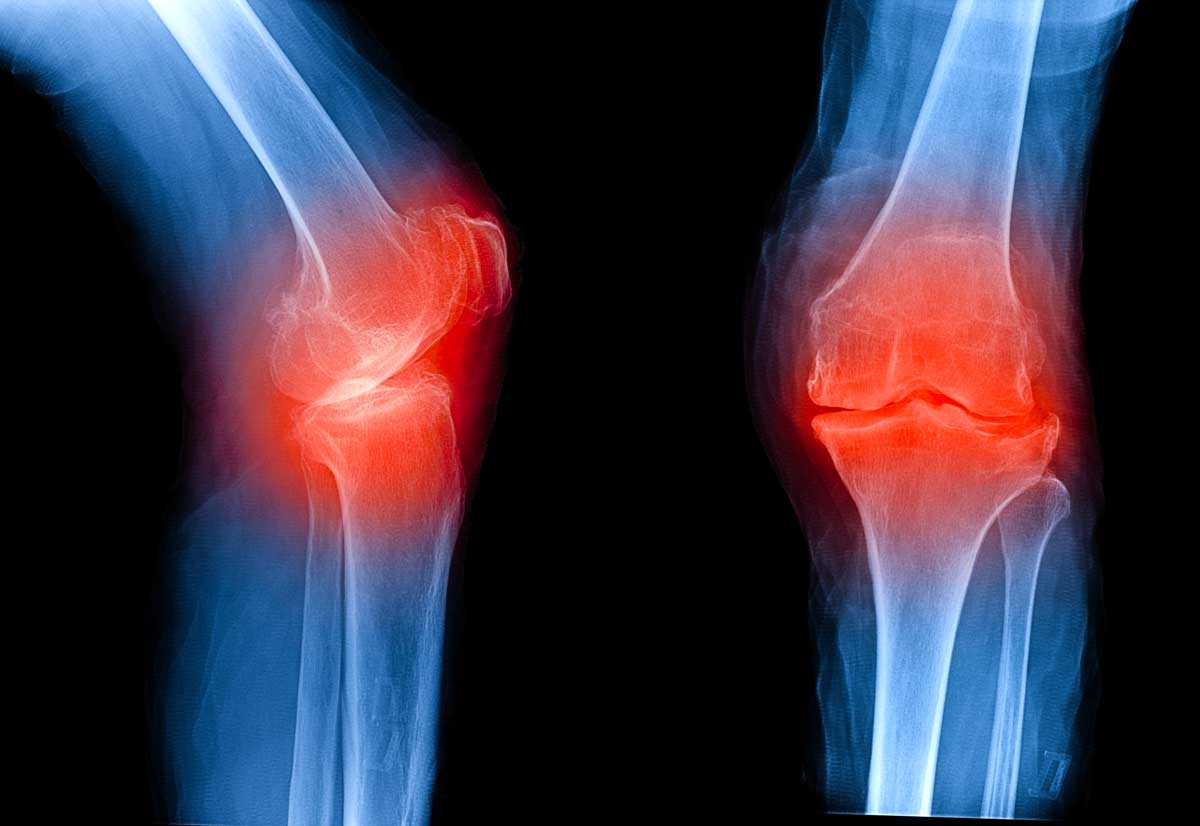Fat stem cell therapy for osteoarthritis
Osteoarthritis, also known as joint wear and tear, is a degenerative disease that affects millions of people worldwide. When the cartilage in a joint gradually breaks down, this results in pain, stiffness and limited mobility, which can significantly impair the quality of life of those affected. This condition typically affects joints such as the knees, hips, hands and spine and is often a major challenge for those affected.
Conventional treatment options are often limited and can be associated with significant side effects, leaving patients with a difficult decision to make. As a last resort, joint replacement is then considered, but this is an invasive and not always risk-free option. In the midst of this scenario, the new type of fat stem cell therapy offers a promising alternative. Stem cells are extracted from the fatty tissue and injected into the affected joint.
What are stem cells and why do they have great potential for medicine?
In simple terms, stem cells are precursor cells or cells of origin (=undifferentiated cells). They can develop into different cell types and thus give rise to different types of tissue. The idea of using stem cells for therapeutic purposes when tissue in the body is damaged is therefore an obvious one. Because what we need at this point is regeneration! Reconstruction. This is exactly what stem cells are fundamentally capable of: helping the body to rebuild damaged tissue.

Fig.: A common cause of premature joint wear and tear and osteoarthritis are sports injuries and extreme strain.
Why can fat stem cell therapy potentially help with joint pain or osteoarthritis?
Adipose stem cells are found in human fatty tissue. In terms of terminology, they belong to the “mesenchymal stem cells” and they contribute to maintaining the health and regeneration of the supporting and connective tissue. In other words, fat stem cells can produce cartilage, bone, muscle, tendons, ligaments and fat. No therapy is initially required for this; the process takes place constantly and naturally in our body.
Mesenchymal stem cells are found (among other things) in human fatty tissue and can potentially build bone and cartilage.
Nevertheless, so many people suffer from degenerative changes, joint wear and tear (=arthritis) and, as a result, joint pain and restricted mobility. How can this be? Is our body letting us down here?
Permanent wear and tear and cartilage degradation always occur if the load is too great and persists for a long time, if there is an imbalance between degradation and build-up. Such stresses that favour joint wear and arthrosis include:
- Excessive or uneven mechanical stress, e.g. in the case of overweight/obesity, incorrect posture or position, extreme everyday stress/sports
- Inflammatory processes in the joint, triggered for example by infectious agents, injuries, heavy metal exposure, inflammatory diseases such as diabetes mellitus or autoimmune diseases
- Circulatory disorders: If there is insufficient blood flow (e.g. in the presence of atherosclerosis), the synovial fluid is less well supplied with nutrients and the cartilage suffers, it “starves”
In addition, the regenerative capacity of mesenchymal stem cells is limited. In the course of life, the number of stem cells decreases and thus the ability to repair damage.
This explains why arthrosis is on the rise in today’s world of increasing stress (including a sharp rise in obesity) and why the prevalence of osteoarthritis increases again in old age. According to the German Society for Rheumatology, around 8 million people in Germany suffer from osteoarthritis.
Fat stem cell therapy is a new approach to the treatment of cartilage damage. The fat stem cells are extracted from the fatty tissue using liposuction, processed and then injected directly into the affected joint. You could say that the body’s self-healing powers are brought into play.
What is the current state of research into fat stem cell therapy?
The great potential of stem cells for the treatment of diseases is also increasingly being recognised in research today. There are already several promising clinical studies that demonstrate the effectiveness of fat stem cell therapy in the treatment of various diseases such as osteoarthritis, cartilage damage and heart attacks. An improvement in pain symptoms and improved cartilage quality (joint function) has been demonstrated. Nevertheless, fat stem cell therapy is still at an early stage of research and has therefore not yet been included in the catalogue of services covered by statutory health insurance.
Example study 1:
Study design:
40 patients with knee osteoarthritis were treated with mesenchymal stem cells or a placebo over a period of 12 months
Outcome:
- Cartilage regeneration: Significant improvement in cartilage thickness and improved cartilage condition in the treatment group compared to the control/placebo group after 12 months (MRI examination)
- Inflammatory parameters in the blood: Significant reduction in inflammatory markers in the treatment group compared to the placebo group
- Clinical outcome: Improved clinical findings (pain, function) in the treatment group
- Safety: The injections were well tolerated, there were no serious side effects
Conclusion of the study:
The injection of allogeneic mesenchymal stromal cells from adipose tissue into the knee joint is a safe and effective treatment method for patients with knee osteoarthritis.
Back in 2004, an article appeared in the german “Ärztezeitung” about how US researchers were able to repair a bone defect in mice with the help of adipose tissue stem cells.
What severity of osteoarthritis can be treated with fat stem cell therapy?
| Arthrose | Befund |
|---|---|
| Stage 0 = no osteoarthritis | Normal findings |
| Stage 1 = questionable arthrosis | Possible osteophytic spurs (bone spur formation), possibly slight cartilage damage |
| Stage 2 = minimal arthrosis | Definitive evidence of osteophytes, possible narrowing of the joint space |
| Stage 3 = moderate osteoarthritis | Significant narrowing of the joint space, multiple osteophytes, sclerosis (hardening) of the bone, possible joint deformity |
| Stage 4 = severe osteoarthritis | Severe narrowing of the joint space, severe sclerosis, pronounced joint deformity |
Table: The severity of osteoarthritis is categorised into a total of 5 stages using an X-ray classification system (Kellgren-Lawrence score). However, there is often a discrepancy between the degree of severity in the X-ray image and the intensity of pain – patients in stage 1-2 may already be suffering from considerable pain.
Example study 2:
Study design:
Meta-analysis: 14 randomised controlled trials using fat stem cell therapy as an intervention in patients with knee osteoarthritis were included
Outcomes:
- Significant improvement in pain intensity and functionality of the knee joint in the treatment group compared to the placebo group (KOOS score, VAS score). These improvements increased over time.
- Improvement in quality of life in the treatment group
- No significant difference in the rate of side effects
Conclusion of the study:
This meta-analysis has elaborated on the safety and efficacy of fat stem cell therapy for knee osteoarthritis and summarises that fat stem cell therapy could be an effective therapy for improving mobility in an ageing population.
It is important to note that
Conservative treatment options (e.g. physiotherapy/osteopathy, weight reduction, inflammation regulation) should be exhausted before carrying out an invasive procedure. Fat stem cell therapy should then be seen as an individualised attempt at healing. The therapy can be carried out for all degrees of osteoarthritis. However, the expected therapeutic success is limited in stage 4, as joint deformities are already present here that cannot be corrected with fat stem cell therapy.
How is osteoarthritis treated at the THERA Praxisklinik?
At the THERA Praxisklinik, we take a holistic approach. Specialists from various specialisations work closely together to identify the cause of your complaints.
We look at joint osteoarthritis from all perspectives. For example, before or during fat stem cell therapy, it may be useful to carry out posture regulation, regulate an inflammatory process in the body or implement weight reduction.
We are there for you together:
- Dr. med. Christian Becker – Specialist in general medicine and naturopathy, diving doctor, emergency doctor
- Dr. med. Ralf Heinrich – Clinic director, doctor for naturopathy
- Dr. med. Uwe Günter – Specialist in orthopaedics and trauma surgery, specialising in acupuncture and neural therapy
- Krimhild Korndörfer-Luft – General Practitioner
- Dr. med. Christian Bahr – Specialist for surgery
- Dr. med. Ralf Hilbert – Nutritionist and laboratory physician, biochemist
- U.v.a.m.
Our team of experienced doctors and therapists will develop a personalised treatment concept for you that is tailored to your needs and your health.
FAQ on fat stem cell therapy
Which joints can be treated?
In principle, all joints can be treated with fat stem cells. At THERA Praxisklinik, we specialise in the treatment of knee, hip and thumb saddle joints.
What does fat stem cell therapy for osteoarthritis cost?
The cost of fat stem cell therapy is in the 4-digit range. The exact amount depends, among other things, on the individual situation. For more detailed information, please contact the THERA Praxisklinik directly by telephone or in writing at any time.
How long does the success of fat stem cell therapy last?
The success of the therapy is based on the regeneration of (cartilage) tissue. The duration of success therefore depends on whether and to what extent tissue-damaging (= joint-stressing) factors are still present after the therapy and lead to a renewed breakdown of the tissue. For this reason, we always work with a holistic concept and research the causes: for a lasting therapeutic effect.
How long does it take to see results after fat stem cell therapy for osteoarthritis?
Most of the treatment effect is seen within a month. The effect can continue to progress for up to six months after the therapy.
Your contact persons
Contact and appointment possible at any time
Do one or more of the above points apply to you and would you like to do something for your health? Are you curious? Please call us to arrange an appointment.
You can reach us during our opening hours on 030 79016533. We look forward to your call or message.
List of references:
Freitag J, Bates D, Boyd R, Shah K, Barnard A, Huguenin L, Tenen A. Mesenchymal stem cell therapy in the treatment of osteoarthritis: reparative pathways, safety and efficacy – a review. BMC Musculoskelet Disord. 2016;17:230. https://doi.org/10.1186/s12891-016-1085-9. Review.
Lopa S., Colombini A., Moretti M. and de Girolamo L. Injective mesenchymal stem cell-based
2022;14:1759720X221117879. Epub 20220816. DOI: 10.1177/1759720X221117879.
Deutsche Gesellschaft für Plastische Rekunstruktive und Ästehtische Chirurige e. V. S2K- Leitlinie Autologe Fetttransplantation. 2023 [cited 19.10.2023]. Available from:
https://register.awmf.org/de/leitlinien/detail/009-017#anmeldung.
Deutsche Gesellschaft für Orthopädie und Unfallchirurgie e.V. (DGOU). S2k-Leitlinie Gonarthrose. 2017 [cited 20.10.2023]. Available from: https://register.awmf.org/assets/guidelines/033-004l_S2k_Gonarthrose_2018-01_1-abgelaufen.pdf
Biazzo A. et al. Autologous adipose stem cell therapy for knee osteoarthritis: where are we now?
Phys Sportsmed. 2020 Nov;48(4):392-399. doi: 10.1080/00913847.2020.1758001. Epub 2020 Apr 27.












